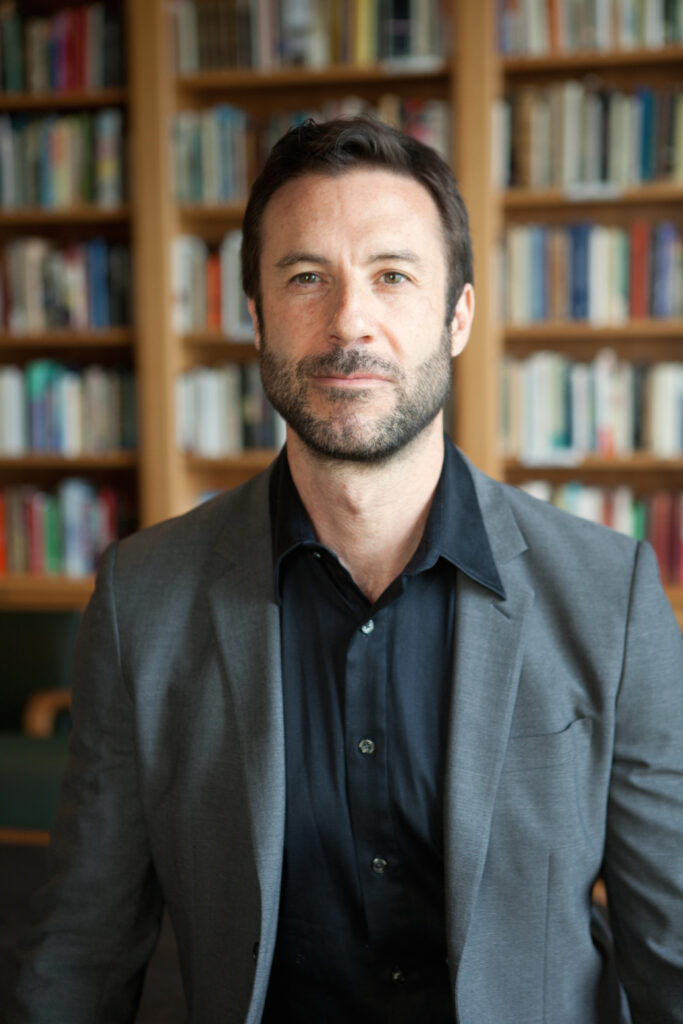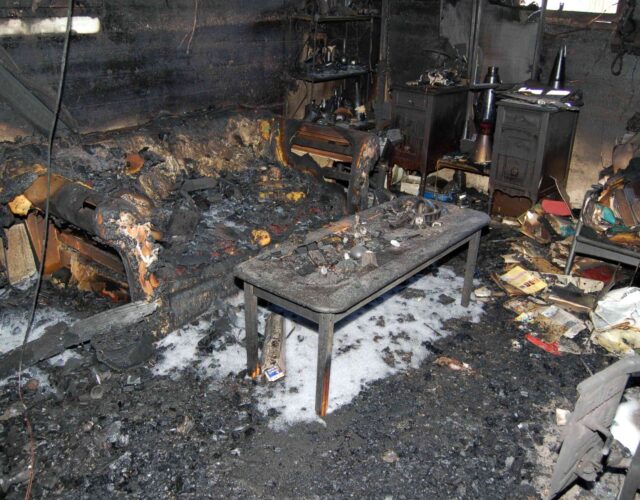
Jason Pine is an anthropologist at the State University of New York, Purchase College, and a recent John C. Haas fellow in CHF’s Beckman Center. His latest project looks at the culture and practices of small-scale methamphetamine production in the rural United States. In his interview with Distillations, Pine explains how culture, geography, economics, history, and law-enforcement priorities all play a role in branding one county in northeastern Missouri the Meth Capital of the United States.
Q: Tell me about your latest project on methamphetamine production in northeastern Missouri. What’s going on in Missouri?
A: Postindustrial shift has left many people of once-thriving industrial centers, such as St. Louis, Detroit, Pittsburgh, and their surrounds, without jobs that can provide a living wage. People move away for opportunities elsewhere, and new talent (teachers, doctors) and new businesses are difficult to attract. In Missouri the megalith Walmart has snuffed out other retailers (and even some manufacturers), while providing cheap goods and low-wage jobs with limited possibilities for advancement.
In areas like Missouri—home of the Old Lead Belt and many of the first and latest Walmarts and where nearly 10% of the population performs manufacturing labor—“late industrialism,” coined by anthropologist Kim Fortun, is a more appropriate descriptive term.
But dispossession and a limited future are not enough to explain the radical decision to take on the risks associated with the do-it-yourself manufacture (with highly reactive household chemicals) and use of a powerfully addictive, illegal narcotic. There is a distinctive material world with which this singular craft is entangled. For one, the precursor ingredients and cooking materials are found in stores almost anywhere in the United States, including the big-box stores Walmart and Home Depot and little-box chain stores Dollar Tree and Dollar General, which are ubiquitous across much of Missouri and beyond.
Meth is also strikingly easy to make. The most common recipe of the last several years, the “shake and bake” method, has simplified the process even further. And meth is easiest to make in areas like small-town and rural Missouri, where there is space and seclusion provided by wooded, rocky ridges and ample distances between homes. Additionally, people in this region often mark the borders of their property with fences, painted boundary markers, and “no trespassing” signs (some of them hyperbolically threatening), while some police their property with dogs. Minding one’s own business often goes with the territory.
I have found it useful to put aside the singular, and sometimes spectacular, qualities of meth cooking in order to consider it as just one practice within a repertoire of local material cultural practices. That is, rather than focusing primarily on an illicit economy, or drug addiction and the pathologies (physical, psychoaffective, moral) with which it is associated, or the violence (self-inflicted, interpersonal, ecological) that often accompanies it, I choose to look at the craft of meth manufacture as meaningful in its own right. The do-it-yourself quality of meth production is shared with more common regional practices, such as fixing one’s own vehicles (also known as shade-tree mechanics), DIY home improvement, homesteading, hunting and fishing, and dressing your catch. The material familiarity and manual dexterity entailed in this repertoire can contribute to the perception that it is reasonable to tinker with potentially harmful chemicals extracted from household products in order to produce a substance of great value. Moreover, the sense of accomplishment and personal sovereignty derived from these practices is felt with equal, if not greater, intensity among meth cooks.
Q: How is it that law enforcement is busting so many meth labs in a place where people tend to mind their own business?
A: Missouri had the highest number of meth-lab busts in the country for about a decade (although currently it is number two, after Indiana). One northeastern county I focused on, Jefferson, had by far the highest number of busts in the state, earning it the unfortunate title of Meth Capital of the United States.
However, the statistics that produce the impressions associated with “meth capital” gloss over some complexities. First, there are some peculiarities of the measurement procedures. The numbers denote lab incidents by location. This can mean the existence of meth-lab waste, which may include fragments of a lab or the waste of multiple labs. One narcotics officer told me that as many as 500 “labs” have been discovered in a single home, but because of their shared location they were counted as one lab. By the same token, if waste is spread across several locations, each location counts as a lab. Many meth cooks who are concerned that their trash may incriminate them hoard their lab waste, while others dump the waste in various locations at considerable distances from the actual cook site. And many meth cooks are repeat offenders. While at home awaiting trial (they cannot be held in custody unless they are violent offenders), they may be busted for manufacturing yet again. Cases pile up, and the public defender’s office is overwhelmed with work (many meth cooks cannot afford legal counsel), extending the wait time for trial to several months.
While law enforcement in the county I studied busts meth labs with greater frequency than law enforcement in most other counties in the United States, these statistics do not mean meth-lab incidents are more frequent there than elsewhere. Differences in funding, training, pressure from residents, the willingness to recognize and prioritize the problem (the sheriff’s office is one of the few I’ve found that publishes on its website the addresses of all meth-lab busts each year), and a desire for media attention (CNN has featured the county’s law-enforcement professionals, while the National Geographic Channel began taping in a bordering county a reality TV show called Methbusters) have all played a role in the formulation of statistics county by county, state by state. The statistics gloss over a great deal of ambiguity and complexity. By the same token I imagine that, for example, Vermont or Maine may have far more meth labs than the relatively low number their law-enforcement officials discover and report.
During my visits to the county’s public defender’s office, people offered additional explanations for the high number of meth busts. One prosecutor is dedicated solely to pursuing drug cases brought by the Municipal Enforcement Group, a multijurisdictional law-enforcement task force largely focused on illicit drug trafficking. Federal money fuels the prosecutor’s efforts, and although some funding was cut last year, the prosecutor has no interest in pursuing other, non-drug-related cases. Sources in the public defender’s office also cited the county’s anonymous tip line as contributing to the high rate of busts.
When a former student and his colleague helped me plot all the county meth-lab busts on a Google map, some policing patterns came into view. We noticed high-density bust areas, many of them trailer parks. One had nine busts in 2012 alone. When I asked one of the narcotics agents for details, he said, “I live in a development down the street. I hit that trailer park harder because I don’t want that stuff around my family.”
In contrast, my colleague William Garriott notes in his book Policing Methamphetamine that in West Virginia, law-enforcement personnel actually went out of their way to avoid finding meth labs. This was because of a “you touch it, it’s yours” policy that governed who was responsible for cleanup, which can cost tens of thousands of dollars. If, for instance, a Department of Natural Resources (DNR) officer were to stumble upon the remnants of a meth lab, cleanup would become the responsibility of the DNR. The two most significant meth-lab busts that occurred in the county where Garriott conducted his fieldwork happened accidentally—one after a sheriff’s deputy responded to a domestic disturbance call, the other after a DNR officer received an anonymous tip that someone had killed deer out of season and was processing the hides in their cellar. (It turned out they were actually making methamphetamine.)
Q: Is meth a specifically American problem? What is its status outside the United States?
A: Not at all. The drug has been around a long time in various forms (pill and powder, street and legalized pharmaceutical), among various populations (bikers, laborers, ravers, men who have sex with men, armies), and in a growing number of places, including Japan, Germany, Czechoslovakia, the United Kingdom, Australia, New Zealand, Vietnam, Mexico, and Argentina.
Q: Who makes and uses meth? What’s the experience of using the drug?
A: In the scenes I studied, meth is most often used as a performance-enhancement drug, and I think this is the case in many contexts historically and geographically.
Meth excites what neuroscientist Jaak Panksepp calls the “seeking system,” the brain function that causes pleasure derived not from satiation but from the anticipation of reward. It is another way of understanding what it means to have a sense of futurity and hope. A substance that can generate these affects is none other than the elixir of life.
Q: Talk about your process. How do you start such a wide-reaching project? How do you gain trust and access?
A: While on a one-year visiting professorship at the University of Missouri at Columbia from 2005 to 2006, I quickly learned while talking to people and reading the local news that methamphetamine manufacture and use were of great concern. One of the people I talked to told me that he comes from the county with the highest number of meth-lab busts in the country (205 in 2005), far exceeding the number of busts in the next county (135) on the infamous list made by the Missouri State Highway Patrol. This person told me his aunt was caring for a meth cook and user with terminal brain cancer and that both his aunt and her patient were willing to talk with me. When I took them up on the offer, I soon entered into the small networks of cooks and users, active and recovered, in a county where meth seemed always to lurk, at least as specter.
I spent 10 months in the county, interacting with nearly a hundred people who were involved in one way or another with meth. These included meth cooks and users and their families, addiction treatment specialists, chemists, physicians, dentists, parole officers, narcotics agents, judges, public defenders and prosecutors, Walmart and other retail-store employees, church pastors, pawn-shop owners, and many others. I hung out in bars and restaurants. I visited thrift stores and storage units and all the Walmarts, Home Depots, Dollar Trees, and Family Dollars. I went to the mouse races at the Lions Club. I met with a partner of a start-up pharmaceutical company whose sole reason for being was to produce a meth-cook-resistant, pseudoephedrine-based cold medicine. I visited the county jail and the storage unit where confiscated meth-lab equipment and chemicals are kept, and I spent an afternoon in the narcotics agents’ safe house. I also rode with the agents when they went on meth busts. I attended a Presbyterian church service most Sundays. I attended auctions and gun shows, participated in shooting competitions, and completed a concealed-carry licensing course (which became a spinoff project on small-town “gun culture”). After I moved back to New York, I made follow-up research trips to Jefferson County. Some of the people I had known were nowhere to be found. Others were incarcerated or had died. A few—too few—were recovering but suffered other terrible obstacles and traumas. Some people whom the court system had snared and released on parole were immobilized by debt and severely restricted earning opportunities. One man I have gotten to know well invited me to the wake of his teenaged daughter, who had died of a heroin overdose.
The sheriff’s department of the county where I conducted most of my fieldwork publishes a complete listing of the addresses of meth-lab busts on a yearly basis. I visited some 200 addresses, and through these material explorations I discovered many things. I found many homes destroyed by fire and abandoned and others that were simply abandoned and subsequently stripped of all recyclable materials and fixtures. I found that meth labs occurred not just in trailer parks or the poorest neighborhoods but also in middle-class suburban homes and sometimes in commercial spaces.
I also found many homes that bore no signs of being a meth lab and were up for sale or for rent or had already been passed on to new residents. In one case I posed as a renter to find out if the owner would disclose the property’s former status as a meth lab—it is unlawful not to disclose the information if you have it—but he never did. In another case I came upon a site where it seemed none of the evidence had been collected: dirty syringes, powder-encrusted jars, a camping stove, a gas mask, empty packages of cold medicine, and a hundred dissembled pieces of electronics and mechanical objects, as well as severed fork ends with prongs resculpted into the form of hands giving you “the finger.” When I asked the narcotics agents why they did not gather the evidence, they told me that I had just reported a new, active meth lab.
Q: Did you ever feel unsafe while doing research? Where did you draw the line when it came to your personal safety?
A: There were a few times when I felt I had put myself at risk. Visiting meth labs that had been busted was not always safe. Sometimes the homes clearly were still contaminated. Another situation that felt potentially unsafe was when a cook I was visiting had several friends come over late at night. They began drinking and using meth and became belligerent with one another during a card game. The house we were in was quite isolated, and my phone did not have a signal. I left before things got too charged.
I feel, however, that the more important risks I take are those associated with putting myself in situations that test my wits and make me question myself. This kind of vulnerability is important for ethnographic research because it makes it difficult to objectify and distance yourself from the people you are studying. Real encounters are often difficult encounters that implicate the researcher in the analysis. In my first book, The Art of Making Do in Naples (2012), I show that the formal, informal, and illicit economies of legitimate or “professional” work (including my own fieldwork), hustling, and organized crime are not clearly distinguishable from one another and, in fact, overlap. In this research my own use of amphetamine in the form of the ADHD medications Adderall and Vyvanse and my own struggles against a persistent fear of being unproductive (linked to depression) bear upon my analyses. When you find commonalities in two very different economic sectors—late industrial and intellectual—you can formulate ideas about the moral and material imperatives that structure a person’s experience in contemporary capitalism in the United States more broadly.
Q: You’ve described your objective as looking at meth production as a material cultural practice rather than as an illegal, fringe activity. What does that mean?
A: A dimension to these meth economies kept showing its face to me: many people use meth as a performance enhancement to help them work longer hours in their jobs at the factory—concrete, roofing, and trucking—and tinkering at home. This everyday doping had an uncanny resonance with middle-class doping with the legalized amphetamines of ADHD medications.
Putting aside the question of legality helped me pay attention to the ordinariness of meth production and consumption—from a consumer culture, craft, and labor perspective. I came to understand meth as one practice within a repertoire of material cultural practices, which enabled me to see beyond what makes home meth manufacture extraordinary and even grotesque. In this way I think I found insight into how this practice is integrated into a particular kind of everyday lifestyle.
Q: What do pop-culture portrayals of meth use and production get right? And what do they typically get wrong?
A: Most pop-culture portrayals of meth use focus on and amplify its spectacular qualities. This is understandable because the kinds of behavior and material transformations often associated with the substance are striking. I found the movie Spun (Jonas Åkerlund, 2002) to be effective, but like many such portrayals, it stops there. Many documentaries and reality TV shows also tend toward the spectacular, whether they focus on rural poor, suburban middle-class, or urban scenes. Spectacularization can happen simply through the omission of contextual factors. Popular representations that have succeeded in bringing the contexts of meth manufacture and use to light (at least in small-town U.S. contexts) include the excellent book (and film) Winter’s Bone(2010) by Daniel Woodrell and the film Cook County (David Pomes, 2009).
Breaking Bad, although superbly researched, written, acted, and photographed, has little to do with the scenes I studied. There were some moments in the series that captured very well certain effects of the drug. Additionally, the plotline—in which a middle-class man worried about covering his medical bills and his family’s future well-being turns to meth production to supplement his income—resonated with the everyday economic challenges of the people I got to know. But in that series small-scale meth manufacture quickly disappeared from the picture, and its professionalization in the form of Mexican organized crime took its place. The very real problem of meth super labs and drug cartels took center stage, and the equally troubling phenomenon of cottage-industry home production no longer played a role.




